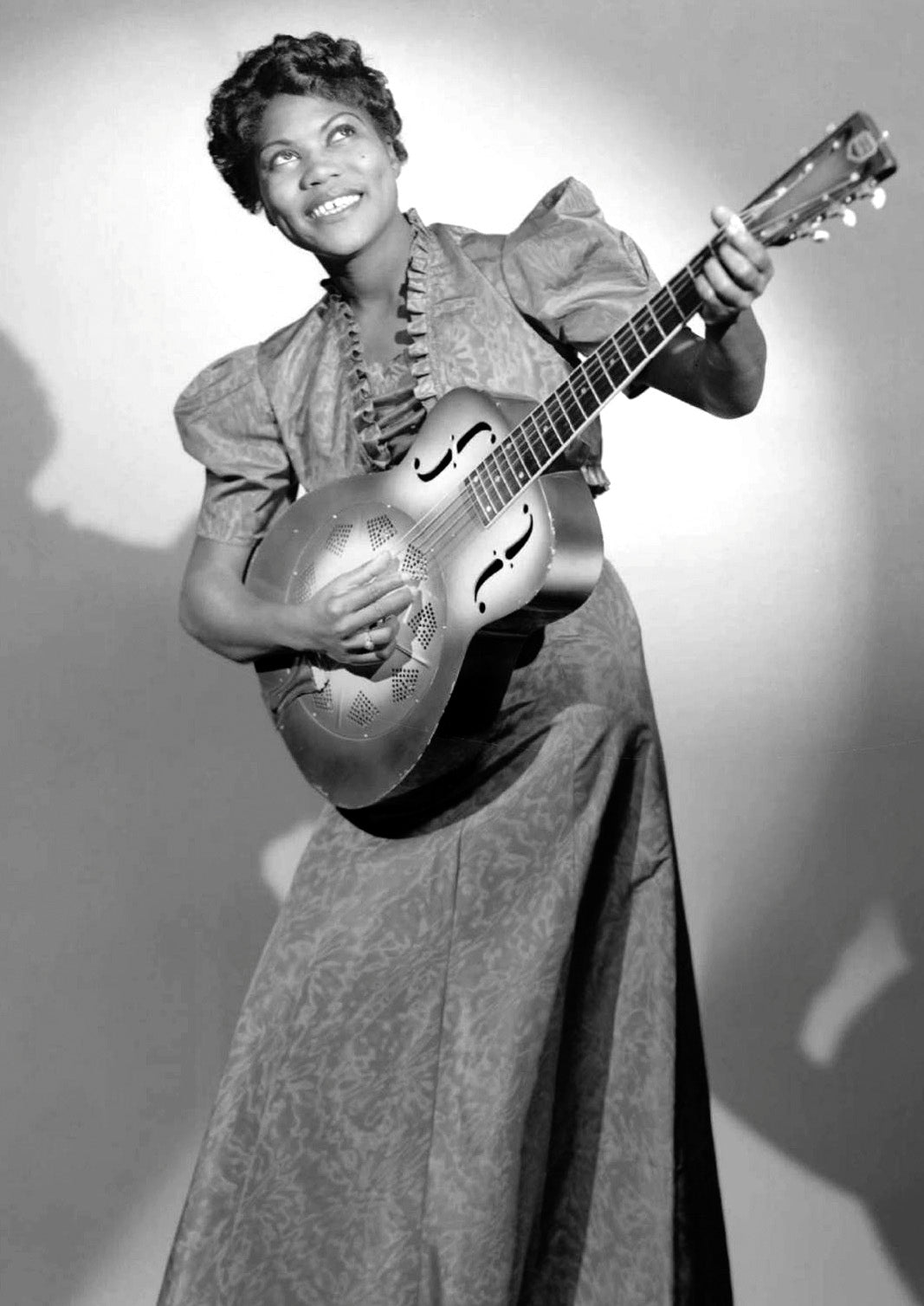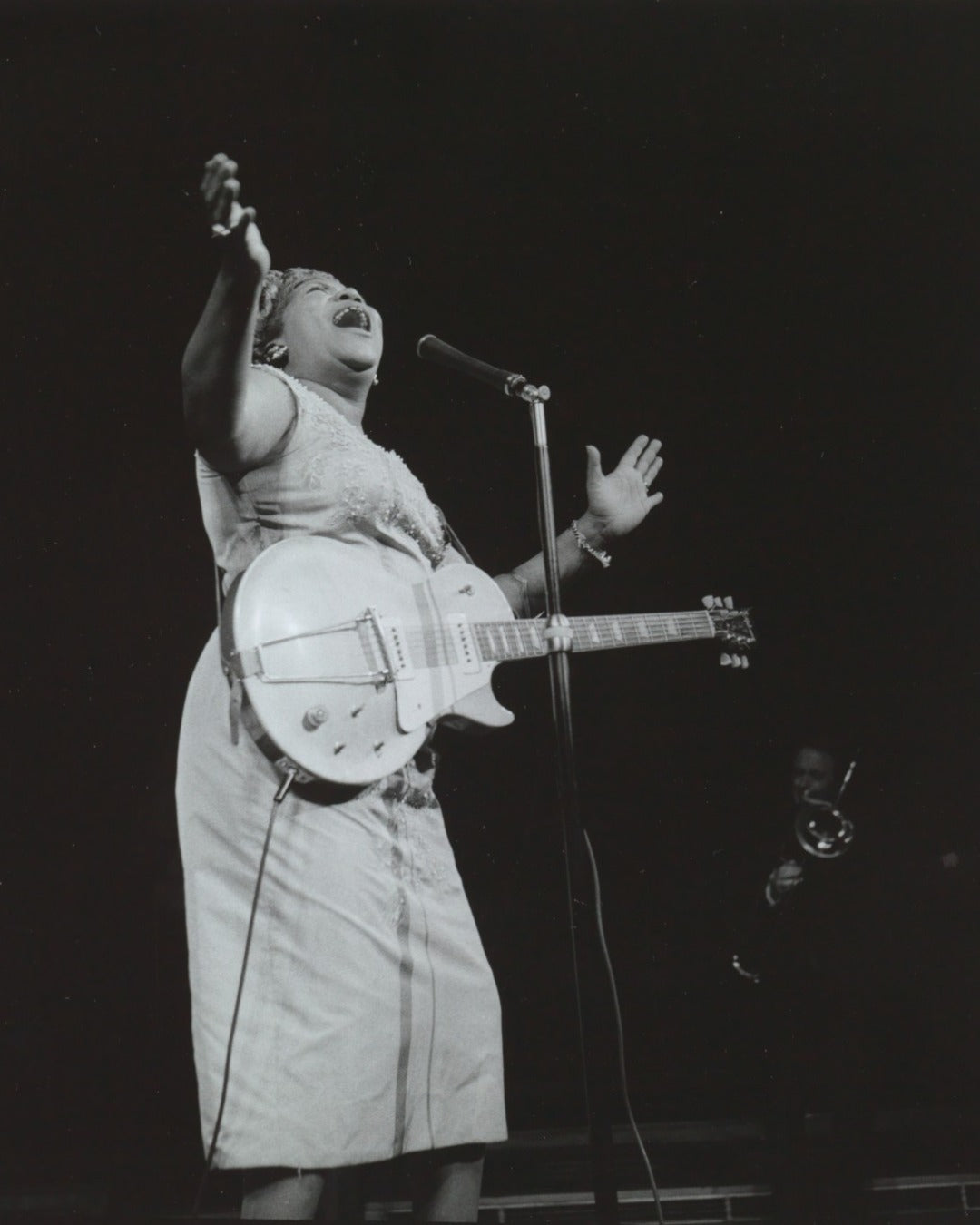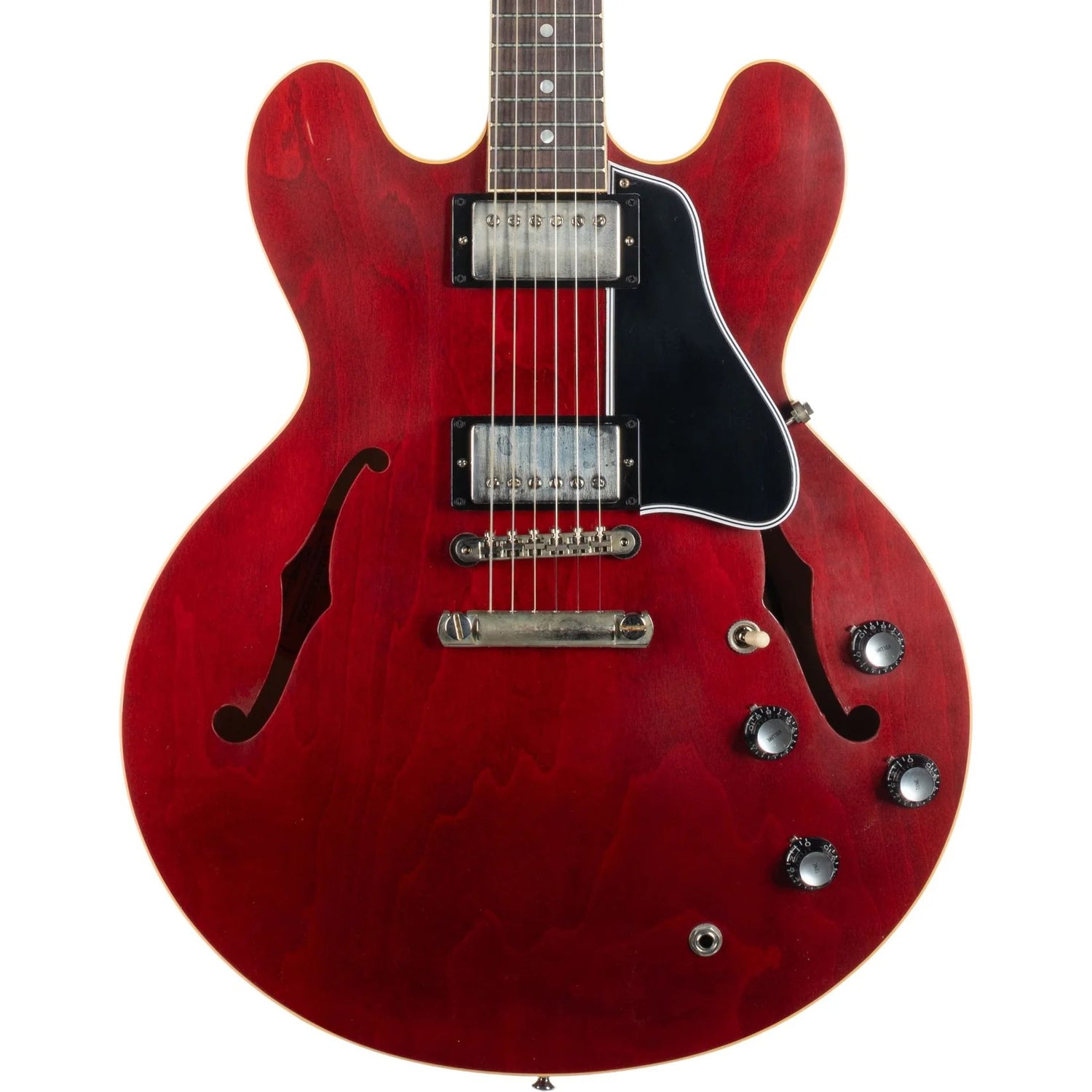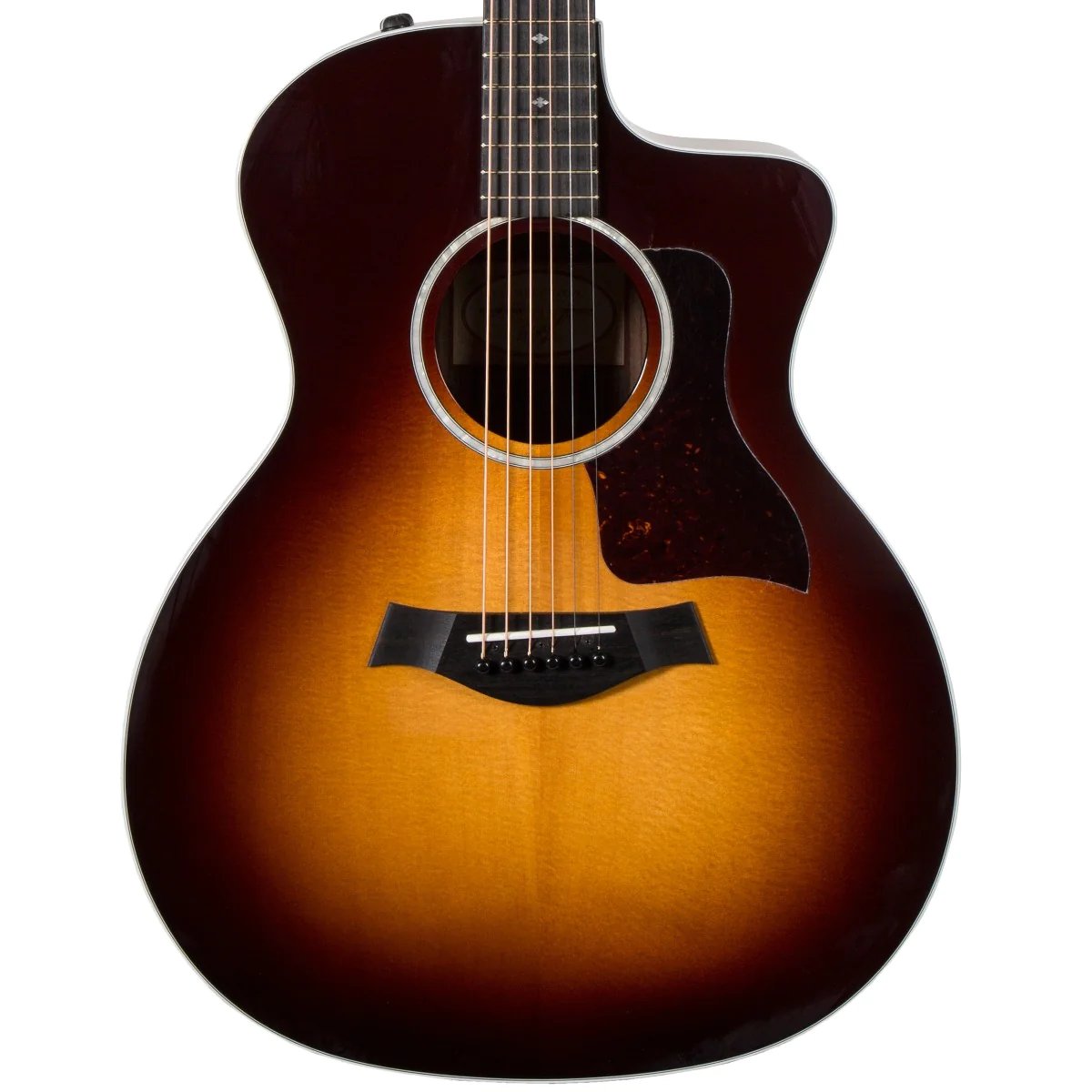
I never cared about fitting into a box. I just wanted to make good music that touched people's hearts. -Sister Rosetta Tharpe
We love titles, categories, and statistics because when everything is put in its proper box, it helps us define and understand the world around us. For instance, Elvis was on his way to being crowned the King of Rock ‘n’ Roll in 1956, when "Heartbreak Hotel" reached #1 on the pop charts. Even if you are from the moon, that one mini biographical sentence offers enough context to help you feel more comfortable while visiting Earth.
However, assigning titles to everyone can eventually become a bit sticky, or even misleading. If Elvis is the King, what does that make Chuck Berry? Oh, right. He is the Godfather of Rock, not to be confused with the Godfather of Punk (Iggy Pop) or the King of Pop (Michael Jackson). See? It’s already a bit crowded without mentioning Muddy Waters (inventor of electricity), Johnny Cash (the man in black), Ozzy (prince of darkness), Bo Diddley, Lou Reed, and whatever wacky titles were bestowed upon them.
Statistics and categories can also become misleading without proper perspective, and complete information; When someone is so far ahead of their time that they cross the finish line before anyone else gets their tracksuit on—or when their achievements are too significant to fit into any pre-fab “boxable” categories—this type of “biographical shorthand” becomes utterly meaningless. Such is the case here. All Rock’s Kings, godfathers, commoners, saints, and sinners can trace their bloodlines back to one common ancestor who built the entire kingdom—talented as he was, it wasn’t Elvis.
In recent years, Sister Rosetta Tharpe has been hailed as the "Godmother of Rock" to celebrate and define her pivotal role as a pioneer of rock music. Although well-intended, the title doesn’t do her justice.
Rock 'n' roll surged in popularity during the mid-1950s, but that’s not where the story begins. Long before "rock 'n' roll" had a name, and 20 years before “Heartbreak Hotel” became a hit, Sister Rosetta Tharpe was the sole sound, face, voice, and lead guitarist of rock 'n' roll--all in one package. Without her influence, there would be no Little Richard, Carl Perkins, Chuck Berry, Led Zeppelin, or frankly, Rock ‘n Roll.

From Sacred to Secular
They say I'm a gospel singer. I say, 'No, I'm not a gospel singer, I'm a singer of gospel.'
--Rosetta Tharpe
Rosetta was born in 1915 and raised in the rural town of Cotton Plant, Arkansas, by her mother, Katie Nubin, with whom she maintained a close bond throughout her life. Katie was a speaker, singer, and mandolin player in the Pentecostal Church of God in Christ (PCOGIC). The Church emphasized singing and creating powerful music as a form of praise and encouraged its Female parishioners to participate alongside the men in musical and teaching roles. This positive, empowering environment unquestionably played a significant role in the early development of young Rosetta Nubbin as an accomplished singer and advanced guitarist.
In the mid-1920s, Rosetta joined her mother as an integral member of the PCOGIC traveling evangelical gospel music group. At the time, Gospel music was indistinguishable (apart from the lyrics) from Rhythm and Blues of the era, attracting crowds of the faithful and (music-loving) “heathens” alike. These successful missionary and concert tours earned young Rosetta money and recognition for her unique style. Perhaps more importantly, the experience boosted her confidence and sense of independence, which will soon be put to the test.
In 1934, Rosetta married PCOGIC preacher Tommy Tharpe. The short, unhappy union ended in 1938, along with her musical relationship with the PCOGIC, setting the stage for Rosetta’s rise to prominence outside the Church. It won’t be her last bad marriage, but it will be the last time anyone tries to tell Rosetta what to do. In a bold move for the era, 23-year-old Rosetta Tharpe took her fearless independent spirit, immense talent, and beloved National Resonator guitar to New York City to pursue success in popular music.
With her new surname and “sister” added to highlight her authenticity, Rosetta Nubin is born again as “Sister” Rosetta Tharpe. Saturday night revelers from Harlem’s famed Cotton Club to Carnegie Hall are blown away by her powerful brand of sanctified Sunday morning Rhythm and Blues & Rock ‘n Roll music. Decca Records eagerly seized the opportunity to sign the extraordinary young Gospel singer and guitarist, extending her a 7-year exclusive recording contract, and nothing will ever be the same.

The First “Rock Star”
Performing Gospel music for non-religious audiences at a church-organized “Revival” is one thing, but playing sanctified “spiritual music” to nightclub audiences sparked conversation in religious circles. Rosetta’s passionate and aggressive guitar playing was even somewhat unconventional for the secular crowd of the late 30s. Yet, none of it pushed boundaries as much as what was soon to come. Rosetta’s first single was a retitled, reimagined take on the popular Gospel Song “Hide Me In Thy Bosom” by famed swing band leader Tommy Dorsey. With her aggressive, demanding, vocal delivery and carefully chosen lyrical substitutions, “Rock Me” became more of a song about an invitation to worldly pleasures than a plea to the divine. By the late 1930s' standards, Rosetta’s risqué interpretation could have easily generated nothing but scorn and scandal, ending her recording career right out of the gate. Other, even more outrageous songs like “I Want a Tall Skinny Poppa” and the over-the-top “Shout, Sister, Shout” followed, with the same effect—Instead of causing an uproar, they became runaway hits. Although Rosetta ruffled a few feathers within religious and secular circles, most people loved her fresh, upbeat sound and the novelty of the divine sister, who was no stranger to earthly delights.
Decca Records realized the marketability of such a novelty, and Rosetta didn’t need much convincing. About half of her material could be said to be lyrically in the “Gospel” style; the rest is a joyful celebration of her free-spirited, independent, and even defiant nature. Likewise, her private life was also a clash of interests. Biographer Gayle Wald sums up Sister Rosetta Tharpe’s balancing act:
“Although she sang about the wages of sin, she pursued romantic relationships outside her marriage, primarily with men, but occasionally with women, wore pants before they were the norm for women, and swore like a sailor. She also maintained a lifelong affiliation with the church that considered all these things anathema.”
Although she was profoundly spiritual and religious, she also loved fame, money, booze, sex, and lots of guitars (yeah, Sister!), and made no bones about it. Her fans loved her for it. By 1945, Sister Rosetta Tharpe was a superstar.

The sounds and style of Sister Rosetta Tharpe
My guitar is my weapon of choice. It allows me to express myself in ways words can't. --Rosetta Tharpe.
Rosetta’s exploration of the guitar started in 1921, before you could even buy a modern-style steel-string flattop, archtop, resonator, or, of course, the electric guitar. These American adaptations of the Spanish guitar will soon unlock the guitar's power and potential, and open up new ways to play. However, without the benefit of generations of guitar heroes to learn from, Rosetta is among the first generation and a new breed of guitarists who forged the path forward.
The guitar she rose to fame and fortune with is a National “Biscuit” style resonator, chosen for its loud acoustic projection that could rival a drummer, piano, and horn players during the pre-electric era. After success on Decca Records, Rosetta celebrated with the purchase of Gibson’s flagship L-5 acoustic archtop in 1939. To achieve sufficient power and volume to fill the larger venues she was now headlining, Rosetta fitted the guitar with an aftermarket pickup, making her one of the first guitarists to “go electric”.
It's impossible to overstate how influential Sister Rosetta Tharpe’s funky rhythm chops and fiery lead guitar work are. The signature guitar style and overdriven tone she pioneered in the 40s will still sound very familiar to any Rock or Blues enthusiast, even if they’ve never been exposed to her recordings. The Rockin’ Sister’s DNA is part of everyone who answered the call to be an electric guitarist. If that’s you, chances are you’ll recognize something in her playing that’s an essential part of your vocabulary. If not, you're missing something vital.
Without the benefit of generations of guitar heroes to learn from, Rosetta drew inspiration from the musical settings she grew up in. You can hear the right hand of a boogie-woogie piano player in her biting staccato double stops and the chops of a Jazz saxophone soloist in her use of chromatic passing tones with the major pentatonic scale. Rosetta’s guitars were set up with high action and heavy-gauge strings that required considerable strength to play. Squeezing the last bit of power from a resonator or archtop (or electric and amplifier) set up this way led to a heavy strumming and picking hand that helped define her aggressive personal style.
Any guitarist seeking to emulate her sound is best served trying to emulate her technique and thought process, rather than obsessing over the electric guitars she played. Of course, if you insist, here ‘ya go…
Rosetta liked the good stuff. She is known for owning a 1939 non-cutaway L-5 archtop with a premium natural finish, and a custom top-mounted pickup, a first-year-of-issue 1952 Les Paul, an early 1950s ES-5 Switchmaster, a 1961 Les Paul/SG Custom (seen in footage of her 1964 tour), a 1963 ES-330, a 1964 Gretsch Double Anniversary, and a 1965 Gibson Barney Kessel Custom, used on her final concert. Known amplifiers include an 8-watt Gibson GA-8 that she pushed to its limits, and can be seen with a borrowed AC30 on her 1964 European tour. Rosetta made unorthodox use of the thumb pick, which she used for lead guitar work, rather than the “Carter scratch” finger style technique, so popular in the early days of the American guitar.

The Legacy of Mighty Sister Rosetta Tharp
“My entire career was one long Sister Rosetta Tharpe impersonation." --Chuck Berry
The height of Rosetta's fame and the bulk of her touring and recording occurred between 1938 and 1949, while still with Decca Records. In 1946, “Strange Things Happening Every Day" reached #2 on the Billboard R&B charts (called “Race” records at the time), becoming her biggest hit of her career. In 1948, a version of her 1930s hit and live show favorite “Up Above My Head (I Hear Music in the Air)" hit #6. In changing times, and an extraordinarily long career for the era, her 1949 version of the Christmas hymn “Silent Night” became the last charting hit of her career, but the story is far from over.
The 1950s brought the first wave of what was now being called Rock ‘n Roll. Artists like Chuck Berry blew the doors off America’s youth with their “new” Rock ‘n Roll guitar style that Sister Rosetta Tharpe heavily influenced, and he wasn’t alone. A new generation of Rockers, steeped in Rosetta’s driving, joyful rhythms, rebellious, norm-busting attitude, and fiery lead guitar style, exploded in popularity across America.
All the while, Sister Rosetta Tharpe continued to perform live, such as her “comeback concert/wedding ceremony” extravaganza at a Washington, D.C. baseball stadium, which drew 20,000 fans. During this “comeback era,” Sister continued to perform concerts and make records. However, these Albums are compilations or live performances of her previously released material, on mostly small labels, with limited distribution and promotion. Fortunately, this includes audio and visual footage of her groundbreaking 1957 tour of the UK.
"Oh, these kids and rock and roll — this is just sped up rhythm and blues. I've been doing that forever." -Sister Rosetta Tharpe on the rise of mainstream Rock ‘n Roll, in a 1957 interview printed in London’s Daily Mirror.
At 50 years old, Rosetta returned to England as part of the Blues and Gospel Caravan in 1964. Both tours had a massive impact on England and were undoubtedly influential on the young musicians in attendance, who, in the years ahead, would be part of the British Invasion sound.
Due to complications with diabetes, Sister Rosetta Tharpe's untimely death occurred in 1973. Although the sound she pioneered is a part of all Rock music, it'd been five years since her last concert, and nearly 30 years since she’d released any new material. By the 70s, even the first generation of Rockers that inherited her style firsthand were already considered “oldies acts.” Although her influence never waned, Rosetta’s name began to slip into obscurity, despite Stars like Little Richard, Chuck Berry, Johnny Cash, and Bob Dylan, among others, loudly touting her influence and importance.
Unfortunately, not much audio or video recordings of Rosetta’s pre-Decca records performances exist, but concert and broadcast footage from Rosetta’s “comeback” 50s and 60s era does. Along with Gayle Wald’s detailed 2007 biography, and “lost” footage digitized and widely available for the first time, many music enthusiasts got their first taste of Sister Rosetta Tharpe. Hearing and seeing are believing, and there is no mistaking the genuine article—40 years after her untimely death, Rosetta began making another well-deserved comeback. In 2017, she was inducted (albeit long overdue) into the Rock ‘n Roll Hall of Fame, and voted the 6th greatest guitarist of all time by readers of Rolling Stone in 2023. But what’s an award or title worth? Sister Rosetta's music and ongoing influence speak for themselves.
Rock and Roll music, pioneered by Sister Rosetta Tharpe, is a potent grab bag of American musical influences. The experience is bold, spirited, and provocative, a cocktail of the sacred and the profane. In that aspect, Rock ‘n Roll music and “Sister” Rosetta Tharpe are indistinguishably woven from the same cloth.
“A good guitarist is good; a great guitarist is Sister Rosetta Tharpe.” -Billy Gibbons.
All her life, Rosetta was told—with the best intentions—that she could play the guitar like a man. To this unintended left-handed “compliment” of the times, Sister Rosetta Tharpe had a standard reply: “Can’t no man play guitar like me!”
Amen, Sister.

-

Alto Music Holiday Gift Guide 2025
The Holidays Are Here — and So Are the Best Deals of the Year The holiday season can get hectic—but there’s no need to let the “holiday crunch” become overwhelming. At...
Alto Music Holiday Gift Guide 2025
The Holidays Are Here — and So Are the Best Deals of the Year The holiday season can get hectic—but there’s no need to let the “holiday crunch” become overwhelming. At...
-

Blast From the Past: 50 Years of "Wish You Were...
With industry success to back it up, many Pink Floyd fans consider "Dark Side of the Moon" the "greatest album" ever made. With the same breath, the fans (and the...
Blast From the Past: 50 Years of "Wish You Were...
With industry success to back it up, many Pink Floyd fans consider "Dark Side of the Moon" the "greatest album" ever made. With the same breath, the fans (and the...






